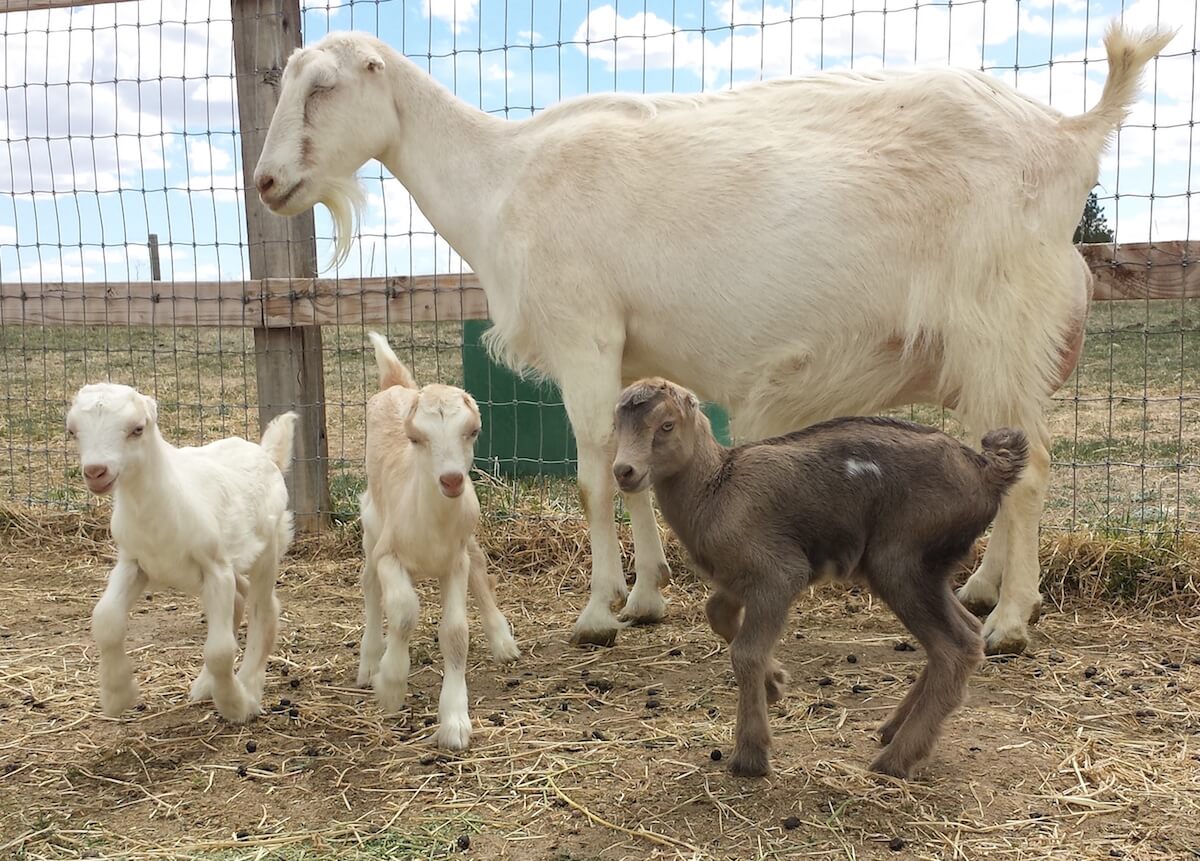Breeding programme essentials for goats, sheep
Farmer’s Diary
Part Two
Last week’s instalment focused on designing a breeding programme for your farm and highlighted key elements to consider, specifically defining clear breeding objectives, evaluating existing stock, and selecting a breeding system.
We received tremendous feedback from farmers eager to improve their current breeding practices and enhance the profitability of their farming operations.
This week, we continue to unpack the key elements by examining additional critical components necessary for its success.
Source and select breeding stock to ensure genetic diversity. Introducing new genetics is important for avoiding inbreeding and enhancing diversity.
To ensure genetic diversity, acquire new breeding stock from reputable breeders and select animals based on performance records and traits that align with your breeding objectives. Performance testing is also essential.
Maintaining genetic diversity within the flock or herd is vital. In this regard, farmers must regularly rotate rams and bucks and introduce new genetics by purchasing breeding stock from different sources. This is critical in preventing the concentration of genetic defects and promoting a healthier and more resilient herd.
Implement biosecurity and health management measures
This is crucial for maintaining a healthy flock or herd. A comprehensive health management programme should include regular vaccinations, deworming, and health checks.
For instance, vaccinate goats against common diseases like pulpy kidney. Regularly check for parasites and treat them accordingly to ensure the breeding stock remains healthy. Biosecurity measures are essential to protect your animals.
Accordingly, new stock must be tested for diseases as a matter of standard procedure. In addition, farmers must implement a quarantine period for new animals. A thorough health management plan, encompassing vaccination and timely treatment, helps prevent the spread of diseases.
Nutritional management
Providing a balanced diet that meets the nutritional needs of breeding animals is essential, especially during critical periods like gestation and lactation. For example, supplementing the diet of pregnant does with additional protein and minerals to support foetal development and milk production.
Ensure access to high-quality forage, grains, and mineral supplements. Given that the cost of feed is the single biggest expense in livestock breeding, farmers must invest in the capacity to grow and produce feed on the farm.
Locally produced feed should be tested to determine its nutritional value, ensuring optimum benefits for both — animals and value for the farmer.
Breeding schedule
Develop your breeding calendar aligned with optimal breeding seasons and market demands. For example, plan breeding to coincide with kidding and lambing when the veld in November has green vegetation means both the mothers and kids/lamps have almost six months of green world, beneficial to the animals.
Kidding and lambing during the dry season, while advantageous due to lower parasite prevalence, can pose challenges, particularly if the farmer has limited capacity to produce on-farm feed. Farmers should also align their breeding plan with peak market demands for goat and sheep meat, such as Christmas and religious festivals, to maximise profitability
Track progress via record keeping
Farmers must maintain detailed records to help in effective breeding management. As we said in our previous instalment, make sure to keep track of mating dates, parentage, birth dates and performance data such as growth rates of offspring.
This information helps in the identification of productive breeding pairs and in informing future breeding decisions.
Regular health checks are also important in ensuring early detection and management of diseases or genetic disorders.
Culling strategy
A breeding plan must necessarily include established criteria for culling animals that do not meet the breeding objectives or have health and reproductive issues.
For example, cull ewes that consistently produce weak or small lambs to improve overall flock quality and productivity.
Additionally, consider culling animals with chronic health problems, poor growth rates, or those that fail to conceive after multiple breeding attempts. Implementing a rigorous culling strategy helps enhance the genetic quality of the herd, ensures resources are allocated to the most productive animals, thereby increasing overall efficiency and profitability.
Regular review and evaluation of plan
Ongoing review of the breeding plan’s progress should be mandatory, including evaluating the performance of offspring against the set objectives.
For instance, assess lamb weaning weights and compare them to target weights and make adjustments to the breeding plan as necessary based on the evidence from the data generated.
In addition, there is need to regularly review fertility rates, growth rates and overall health indicators of the herd to ensure that breeding goals are being met. This allows the farmer to implement timely interventions and the optimisation of breeding strategies for improved productivity and profitability.
Welfare and hygiene
Ensure that breeding practices adhere to high standards of hygiene and animal welfare by providing a stress-free environment and proper care. Maintain clean and spacious living conditions, adequate shelter away from extreme weather and handle animals gently to reduce stress and improve overall health.
Ensure regular cleaning and disinfection of housing areas to prevent disease outbreaks and guarantee that animals have continuous access to clean water and nutritious feed.
Also implement a routine health check schedule to monitor the wellbeing of the animals. This will help in ensuring that any health issues that arise are promptly attended to. Prioritising animal welfare will not only enhance their quality of life but will also contribute to better breeding outcomes and overall farm productivity.
Market considerations
Since goat and sheep farming is done for profit, farmers need to align their breeding plan with market demands and consumer preferences. For instance, if there is a high market demand for organic goat meat, focus on breeding goats that thrive on a natural diet marketed as organic.
Similarly, farmers should consider breeding sheep with desirable quality meat such as Meatmaster and Damara if there is a strong market for mutton.
As the saying goes, “Know your market; cater for its demands. Farmers must ensure they produce animals that meet market standards to be profitable. Understanding and responding to consumer trends and preferences is a key success factor on goat and sheep farming.”
Conclusion
In conclusion, designing, implementing and continuously assessing a goat and sheep breeding programme is crucial for ensuring productivity and profitability. A well-structured breeding programme enables farmers to set clear breeding objectives, select superior breeding stock, and introduce genetic diversity, which helps in enhancing the overall quality and resilience of the herd. Implementing such a programme involves meticulous planning, including optimal breeding schedules, rigorous biosecurity and health management measures, and balanced nutritional management to support critical periods like gestation and lactation.
Continuous assessment of the breeding programme on the other hand allows for regular monitoring of performance data, timely identification and culling of underperforming animals and adjustment of strategies to meet evolving market demands and consumer preferences. This ensures that the breeding objectives are consistently met, leading to improved productivity, better health and welfare of the animals and ultimately, higher profitability and sustainability of the farming operations.
Sheuneni Kurasha is the managing director of Chivara Farm, a diversified farming operation which specialises in stud breeding for small livestock (Boer goats, Kalahari Red goats, Damara sheep and Meatmaster sheep) as well as Boran cattle. For feedback, kindly get in touch on email: kurashas@ gmail.com; X: @chivarafarm or WhatsApp: +263 77 2874 523.-herald









